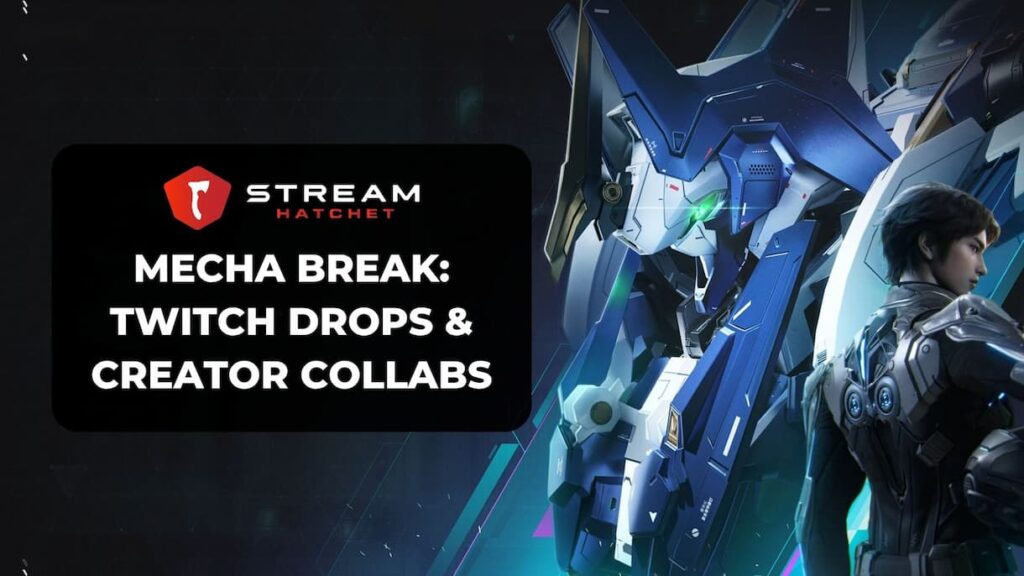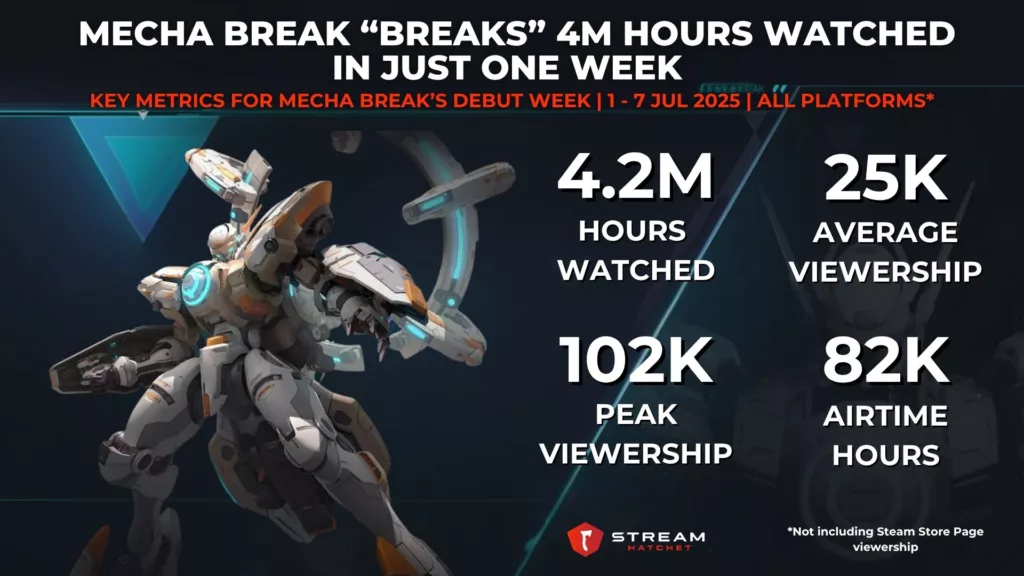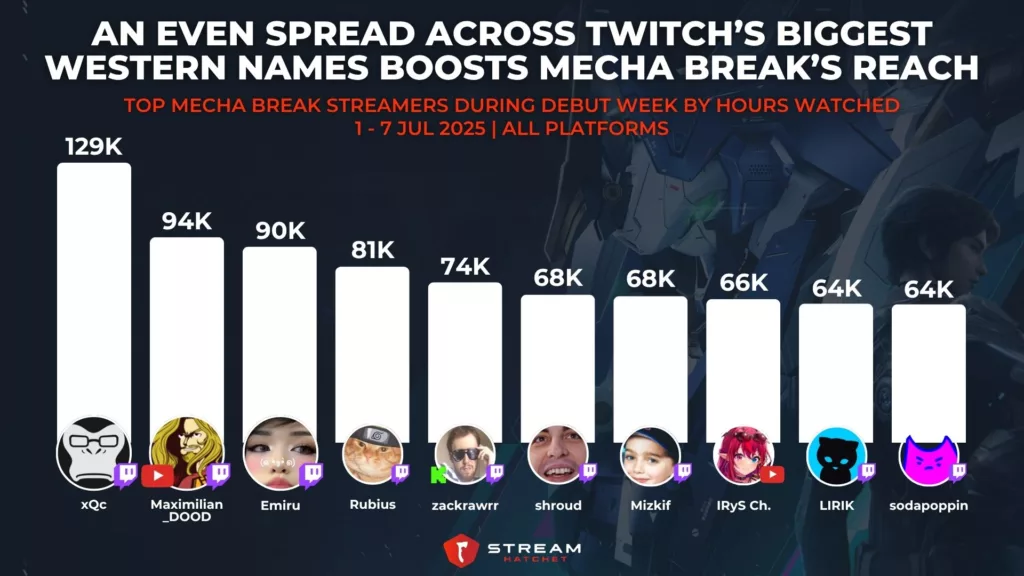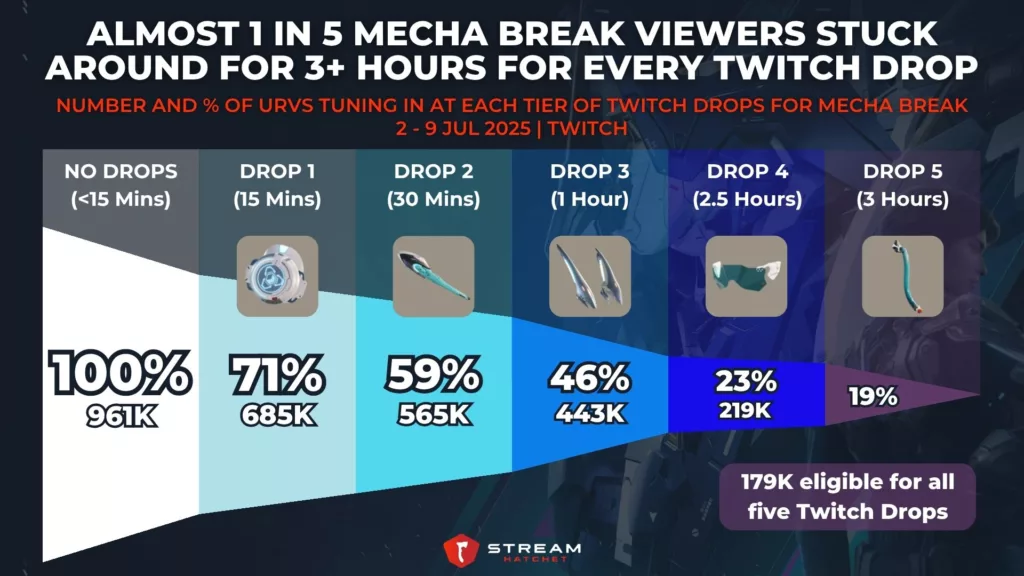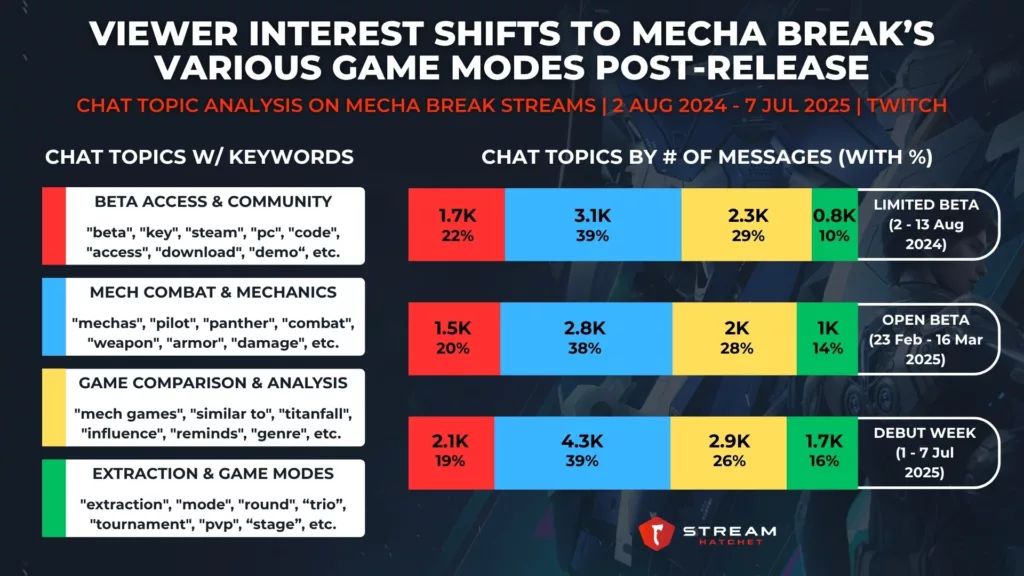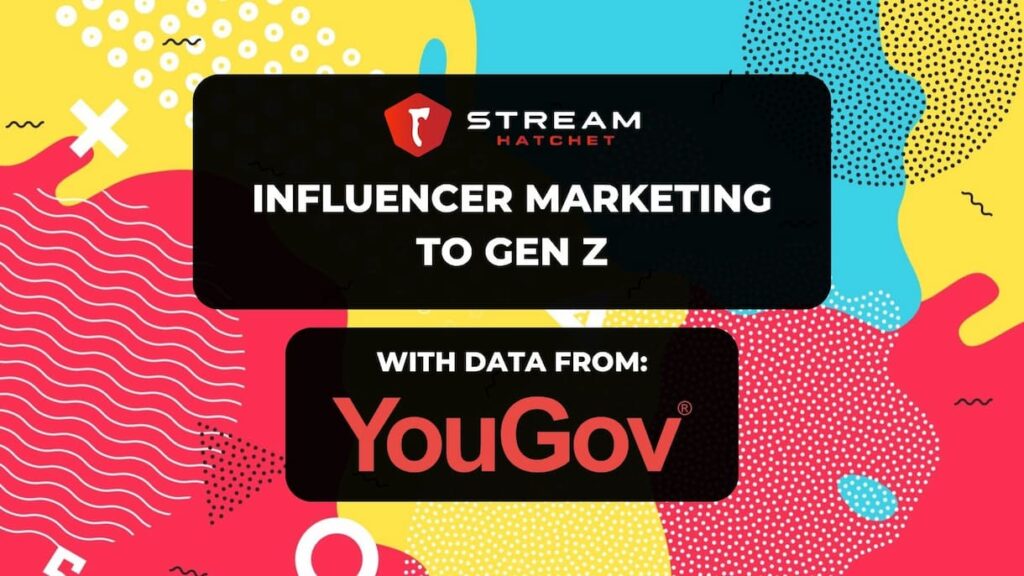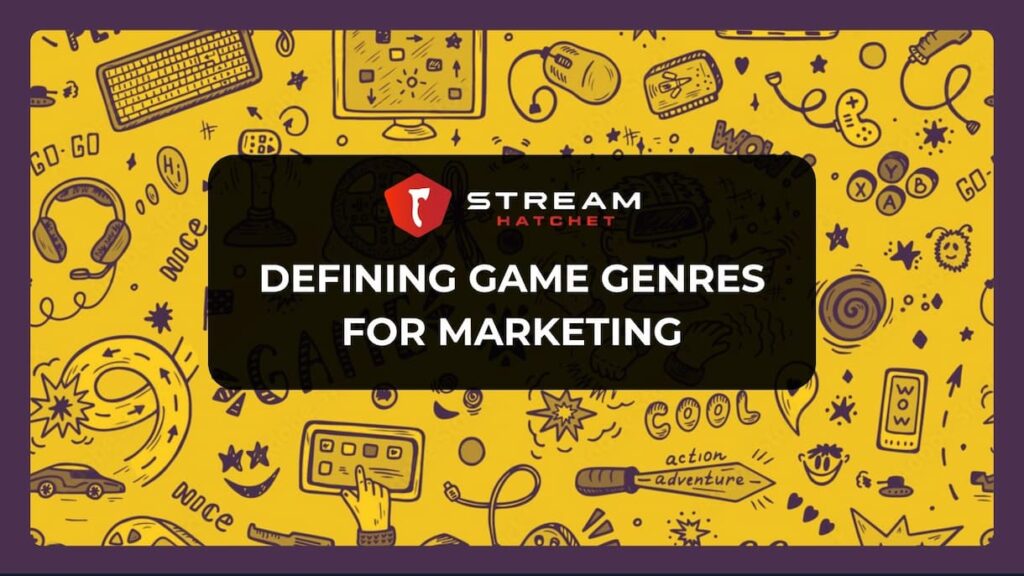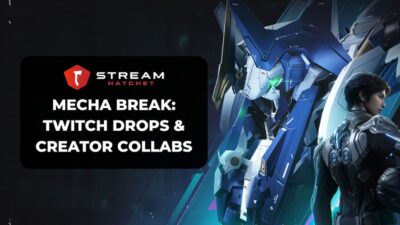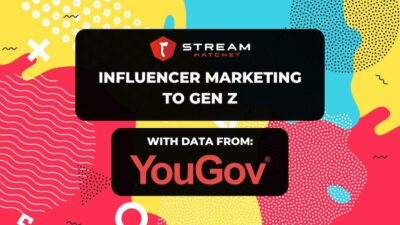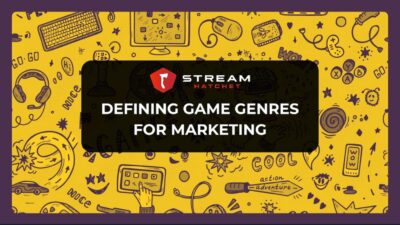Some games simply ooze energy out of every pore. Seeing a single clip or playing just one round is enough for the developers’ passion to shine through on the screen. Mecha Break is one such game: A mecha shooter title developed and published by Amazing Seasun Games that was fueled through a 10-year development cycle (and 4 reboots!) by sheer enthusiasm for the concept. Mecha fans are known for their hardcore dedication, and Mecha Break’s creative team is clearly no exception.
However, the company faced a key issue: Being based in China, how could they bring their title to Western audiences? Other Chinese studios have recently broken into this market, like Black Myth: Wukong developer Game Science. But to do so requires the support of community insiders who champion these games and spread it to their fans. In this article, we’ll look at how Mecha Break used live streaming to get in front of Western audiences and how live-streaming viewers responded to the game upon release.
Mecha Break Activates its Core Audience with Big-name Talent
The game’s hype served it well upon release. In Mecha Break’s debut week, the game generated 4.2M hours watched with a peak viewership of 102K (ignoring Steam Store page viewership). This was a fantastic performance for a game without a recognized IP, with a relatively niche aesthetic, and without the backing of a well-known publisher. Viewers clearly loved the sheer energy of the game, proving that ‘robots and lasers’ still sell. This response echoes Seasun CEO Kris Kwok’s opinion that “you can gauge a game’s success just by watching players’ faces”, proving his love for the game by even jumping onto some streams himself.
Of course, these aren’t just ‘robots and lasers’: Mecha media lives or dies by its attention to detail and its awareness of the mecha worlds that have come before. To that end, Seasun undertook a number of collaborations that would appeal to mecha fans:
- Famed mecha designer Takayuki Yanase lent credibility to Mecha Break with his ‘striking’ designs for the game’s mechs (known as “Strikers”).
- Xenoblade Chronicles X composer Hiroyuki Sawano created an original song for the game that would resonate with mecha fans.
- 8BitDo created a custom Mecha Break keyboard with an aesthetic sure to hook in diehard mecha fans.
In this way, Mecha Break activated its core audience while establishing itself as a separate world from games like Titanfall 2, Armored Core 6, and Gundam Breaker 4.
Still though, Mecha Break needed to reach new audiences to make their 10-year long effort worth it. The crown jewel of this campaign was an event pitting Twitch streamers xQc and Shroud against one another with their respective teams. The event clearly worked: The top streamer for Mecha Break in its debut week was xQc with 129K hours watched (with shroud bringing in 68K hours watched). Many of the other top streamers in the game’s debut week were also big-name Western creators like Maximilian_DOOD (94K) and zackrawrr (74K). Surprisingly for a mecha game, a couple of female streamers also made the top 10 including Emiru (90K) and VTuber IRyS (66K).
Twitch Drops and IRL Marketing Push Mecha Break to a Western Audience
So how did Seasun get Western audiences interested in their title, apart from this big xQc/Shroud collab? Working with PR and Marketing firm Uberstrategist, Seasun pushed the game across as many Western media channels as possible. They announced Mecha Break at The Game Awards in 2023, they set up an alpha and 3 beta playtests to get feedback, and they made IRL appearances at NY Comic-Con and San Diego Comic-Con which featured events like live merch drops and hands-on demos. This marketing push was an incredible success, generating 360K Steam wishlists from a previously untested developer.
But streamers were the linchpin of Seasun’s marketing campaign for Mecha Break, and they reached out to key creators who would champion the title’s action-oriented gameplay. Timed with the game’s release, Mecha Break held a month-long Twitch Drops campaign split across four weekends (the full details of which can be found here). Among the streamers participating were a number of creators whose audiences bridged the East-West divide, such as the VTubers from Phase Connect who would appeal to fans of anime-adjacent media.
Crucially, viewers were rewarded with more Drops the longer they tuned in. A truly dedicated segment of 179K fans – almost one-fifth of all viewers – stuck around for more than 3 hours to receive all five Twitch Drops. At minimum, that’s 537K hours watched from these fans on Twitch Drops-enabled streams alone. Looking at the top of the funnel, 71% of all viewers hung around for at least 15 minutes, making them eligible for the first Twitch Drop. Close to half of all viewers watched Twitch Drops-enabled streams for over an hour – an impressive retention time that extends beyond just hardcore mecha fans.
Mecha Break Stirs Up Viewer Interest In Different Modes Post-Release
Now in front of Western viewers, Mecha Break simply had to impress them. But, as a live service game, this was never going to be an easy task. The usual monetization controversies and false accusations of the game being P2W were inevitable. But thankfully, Mecha Break mostly skirted these discussions on live streaming, where streamers actually experiencing the gameplay could vouch for the game.
Instead, conversation shifted to the game’s various modes. Mecha Break defies easy game genre classification: It’s clearly an action/shooter game, but the various multiplayer modes somewhat clouded players’ understanding of what they were looking at (a feeling no doubt exacerbated by the mecha-style UI of clashing and flashing indicators). Mecha Break is mostly a hero shooter similar to Marvel Rivals or Overwatch 2. But it also has an extraction shooter mode similar to Escape from Tarkov or ARC Raiders, a subgenre that has become incredibly popular in the last few years.
It’s no surprise then that 1.7K chat messages on Twitch streams centred around the game’s various modes during its debut week. That’s double the number of messages on the topic during the game’s beat back in August of 2024. During that beta, fans were more concerned with drawing comparisons to previous mecha games, but now they’re finally getting a clear picture of what Mecha Break is, not simply what it looks like. It may take time for a meta to develop among the various game modes and for Seasun to better understand what types of gameplay fans most enjoy.
_
Mecha Break’s fantastic marketing campaign has paid off by bringing the game to a wide audience. However, moving forward, Seasun needs to focus on retaining that audience: Responding to feedback, pushing new features, and promoting their esports tournaments. The game is still in Season 0 (with Season 1 beginning on October 1st), so there’s plenty of time to make adjustments. But doing so requires engaging with burgeoning communities like those on Twitch and measuring the social spread of their game – a task that requires expert guidance.
To keep up to date with the latest game releases shaping live streaming, follow Stream Hatchet and receive exclusive newsletter-only content:
